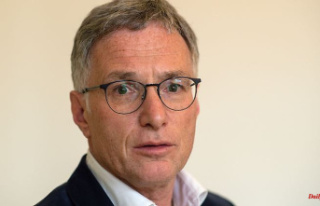Accompanying people at the end of life is a challenge. More than 900 people in the state have been trained as volunteers and are involved. The development should continue.
Wittenberg (dpa/sa) - The chairwoman of the hospice and palliative care association in Saxony-Anhalt, Sindy Herrmann, would like more diversity in hospice work. "We need particularly young volunteers," said Herrmann, who runs the Katharina von Bora Hospice in Wittenberg, the German Press Agency. It is not only about the direct accompaniment of the seriously ill and dying. In the Wittenberg hospice, for example, a 13-year-old regularly offered music afternoons.
Tech-savvy people who can look after websites and set up information stands are also needed. And she would also like to see more people with a migration background and more men. Diversity is important for the idea of a caring community and to be able to bring together suitable volunteers and those who are accompanied. So far, many volunteers have been on the fringes of their own work.
According to Herrmann, 922 trained volunteers worked in inpatient and outpatient hospice work in Saxony-Anhalt last year. She is proud of the "committed co-movers" who made their time available without reservation and without an order. This everyday normality is the basis for hospice work.
"We hoped that we would be able to welcome the 1000th volunteer in 2022. It doesn't look like that at the moment," said the head of the association. During the corona pandemic, the numbers rose more slowly. Courses for volunteers continued despite the cancellations. The demand for the so-called last-aid courses is there. However, hospices continue to depend on donations. Much is not financed in the outpatient hospice services, mourning work is an example, said Herrmann.
Last year, 822 dying people were accompanied in the seven inpatient hospices in the country, as Herrmann said. The number is constant compared to the previous year. At home, 949 people were accompanied, more than in 2020, when there were 880. Many people were concerned that they would not be allowed to receive visits to the nursing home, hospital or hospice. For the hospices one could take care of the people. "A visit to dying and palliative care patients is always possible," said Herrmann.
The Saxony-Anhalt Hospice and Palliative Care Association has existed for 20 years. From a pioneering phase, one has now developed into a phase of institutionalization. Accompanying people at the end of life is possible on an outpatient and inpatient basis, specialized outpatient palliative care teams offer support, and children's hospice work has clearly gained momentum, said Herrmann. In the future, however, more attention must be paid to other places of dying, death and mourning, such as integration and disability support facilities, nursing homes and hospitals.
The association has set itself the task of making the actors involved in palliative care and hospice work transparent. This included care facilities and hospitals as well as established doctors with additional training and care services with trained people, as Herrmann said. The aim is a digital map on which those affected can find targeted care offers.












